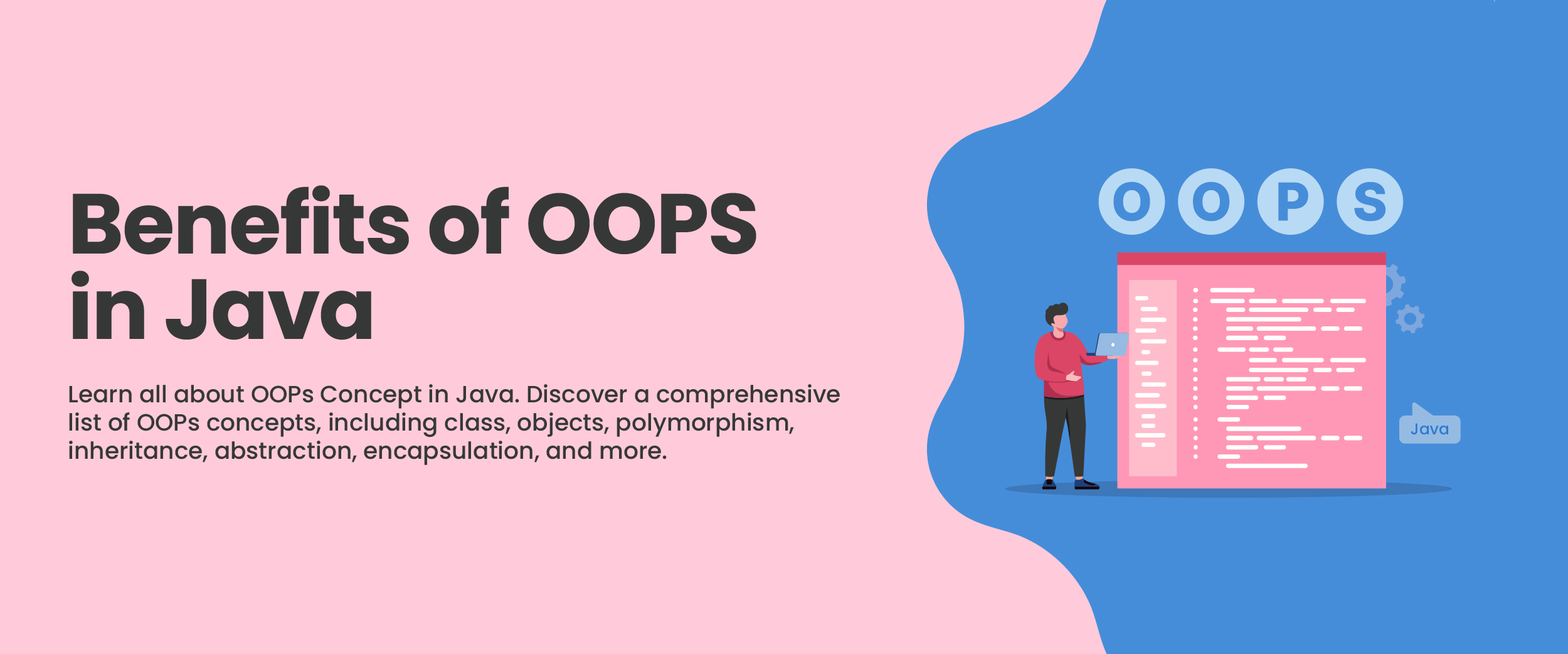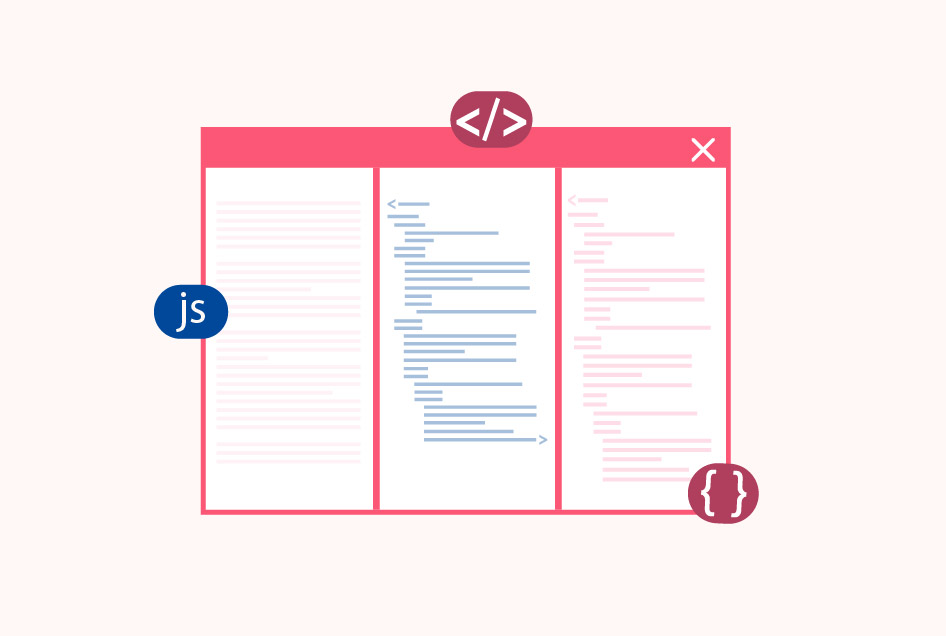Top 8 Benefits of OOPs in Java: with Disadvantages & List of Concepts
Object-oriented programming (OOP) was first developed in the mid-1960s, with the introduction of the Simula programming language in 1967. Simula brought forth the fundamental concepts of OOP, such as classes, objects, inheritance, and polymorphism, which are widely used in the field of programming today.
OOP is used in Java to develop software applications across various fields, including operating systems, enterprise applications, and web applications. OOP has become the preferred programming model for many developers due to its ability to create robust and easy-to-maintain software applications. This blog will cover some of the basic concepts of OOPs in Java, including the benefits of OOPs in Java.
The Concept of OOPs
The object-oriented programming (OOP) model centers around objects and classes. It organizes code into classes, which act as blueprints to create objects. These objects are defined by their attributes and properties in a class and contain encapsulated data. OOP is often used in association with other programming languages, such as Java, C++, and Python.
OOP enables developers to create modular, reusable, and maintainable programs and applications in a shorter time frame. As a result, it has become a preferable option for developing large-scale software applications.
Consider taking an online Core Java course to master Java’s basics and concepts of OOPs.
Benefits of OOPs in Java
The multiple advantages of OOPs in Java are as follows:
1. Code Reusability
The concept of Object-Oriented Programming (OOP) is essential for efficient code writing. Inheritance supports the reusability of code. When creating a new class, developers often utilize code from an existing class by deriving the new class from it. This allows for the reuse of methods and attributes from the original class.
Also Read: Benefits of OOP in C++
2. Simple Troubleshooting
The concept of encapsulation implements troubleshooting in OOPs Java. This is where the data and the methods that operate on it are kept together in the same class, allowing for easier organization and debugging of the code. Therefore, allowing the users to identify the root cause of errors in code makes it easier for them to fix errors without having to check every code section.
In addition to this, object-oriented programming also allows for better code readability and abstraction, making it easier to identify and solve errors.
3. Prevents Data Redundancy
One of the main advantages of the OOPs concept in Java is its ability to reduce data redundancy. Data redundancy is when data repeats unnecessarily, which can lead to data inconsistencies, storage problems, and other issues.
Using encapsulation, OOPs help reduce data redundancy by allowing to reuse of data in multiple classes. This means that without having to rewrite, the same data can be used in multiple classes. This helps reduce data redundancy and increases code efficiency, ultimately leading to better performance.
4. Modularity
Modularity is one of the key benefits of OOPs in Java because it allows for easier code maintenance and scalability. Modularity helps break down complex code into smaller, more manageable chunks. This makes it easier to maintain and update the code and also add new features.
Modular code is also easier to debug, as it allows developers to focus on one module at a time. It can be modified and extended without having to rewrite the entire codebase.
5. Code Maintenance
Code maintenance is an important advantage of OOP in Java. OOPs provide tools such as inheritance, abstraction, and encapsulation that make it easier to modify, maintain, and debug code.
In addition, object-oriented programming helps organize code and makes it easier to find and fix bugs. Ultimately, this leads to an efficient and maintainable codebase.
6. Code Security
Data abstraction and encapsulation in Java provide security advantages by allowing the user to restrict access to certain data and methods. This means that only authorized users can access the data and methods, reducing the risk of malicious access.
Both data abstraction and encapsulation help to organize the code, making it easier to identify and fix any security flaws.
7. Scalability and Extendibility
The use of Object-Oriented Programming (OOP) in Java simplifies the scaling of a program to handle a growing amount of data. OOP allows for encapsulation and abstraction, which means that the internal workings of objects can be modified without affecting the entire codebase.
This results in improved code organization, readability, and the ability to extend and modify the software system as requirements evolve. All this leads to more robust, scalable, and extendable applications.
8. Problem-Solving Ability
Object-oriented programming (OOPS) is a powerful approach to solving complex problems by breaking them down into smaller, bite-sized components. It enables modules with the same interface to replace smaller codes. This approach enables efficient problem-solving and improved overall performance.
Disadvantages of OOPs in Java
Although Java’s OOPs have many benefits, they also have some drawbacks. Given below are some of these drawbacks.
1. Lengthy Programs Leading to Slower Execution
Classes and objects are the two basic units in OOPs. Due to inheritance, the properties and methods of classes are interconnected. This results in lengthy programs and codes. As programs grow longer with multiple levels of inheritance, their execution becomes slower.
2. Challenges in Testing and Debugging Object-Oriented Programs
Testing and debugging object-oriented programs can be more challenging due to the intricate interdependence and interaction of objects and classes, as well as the potential presence of hidden bugs and errors.
3. Coding Proficiency for Effective OOP Design
A high level of skill and experience is vital for designing and implementing effective and well-structured code with OOPs. An experienced programmer only can ensure codebase abstraction, encapsulation, inheritance, and polymorphism are appropriate.
List of OOP Concepts in Java
The different concepts of an object-oriented programming language are crucial to understanding the benefits of OOPs in Java. Some of these important concepts are described below:
1. Class
A class in OOP is a collection of objects that share similar characteristics and behaviors. It is a logical entity that is user-defined and sets the properties or methods common to the same type of objects in a class. With classes, developers can define many objects that behave the same way without having to write their code over and over again.
2. Objects
Objects in OOP are the basic unit of an object-oriented programming language. They are instances of a class and represent real-world entities. New keywords and constructors create objects. Objects contain attributes and methods that define their state and behavior, and they interact with each other by sending messages that invoke the object’s methods.
3. Abstraction
Abstraction in OOPs is the process of hiding the internal details and showing only the essential features of an object. It involves representing the data of an object in a simplified form so that it can be understood and used more easily. It also allows developers to create objects that can be used in multiple ways without having to understand the internal details of the object.
4. Encapsulation
The concept of encapsulation involves combining data and code together. It allows developers to modify the internal details of an object without impacting the external code that uses it. This is accomplished by hiding variables or data within a class and making them accessible only through member function declarations.
5. Inheritance
In inheritance, one class inherits the properties of another class. The class whose features are inherited is the superclass (parent class). The class that inherits the features of the parent class is called the subclass (child class).
6. Polymorphism
Polymorphism involves achieving one task in different ways. There are two methods in Java to achieve polymorphism. One is called “overloading”, which means the developer can have multiple methods with the same name but different inputs. The other is “overriding”, which happens when a class can change the way a method works that it inherited from another class.
These methods give the flexibility to use different approaches to perform tasks in a program.
Conclusion
Developing complex software applications requires the use of OOP’s advantages, like inheritance, polymorphism, abstraction, and encapsulation. The numerous benefits of OOPs in Java prove that their usage will continue to remain crucial in software development as long as there is a growing demand for reliable and efficient software systems.
You can learn about these OOPs concepts in Java used for software development.
FAQs
The advantages of OOPs include:
Modularity: Objects can be created, reused, and modified independently.
Abstraction: Objects hide their inner workings, allowing developers to focus on what the objects do rather than how they do it.
Encapsulation: Objects contain all the information and code necessary to perform their tasks, making them self-contained.
Inheritance: Objects can inherit the characteristics of other objects, simplifying code development and maintenance.
Polymorphism: Objects can be used in different ways depending on the context, making code more flexible and extensible.
Java uses object-oriented programming (OOP) to organize programs around objects and data. In OOP, objects interact with one another to design applications and computer programs. The objects are created from classes that share similar properties and behaviors.
Java is an ideal language for OOPs because of its features like encapsulation, abstraction, inheritance, and polymorphism. Java also has many libraries and frameworks that make it easy to develop robust and scalable applications.







